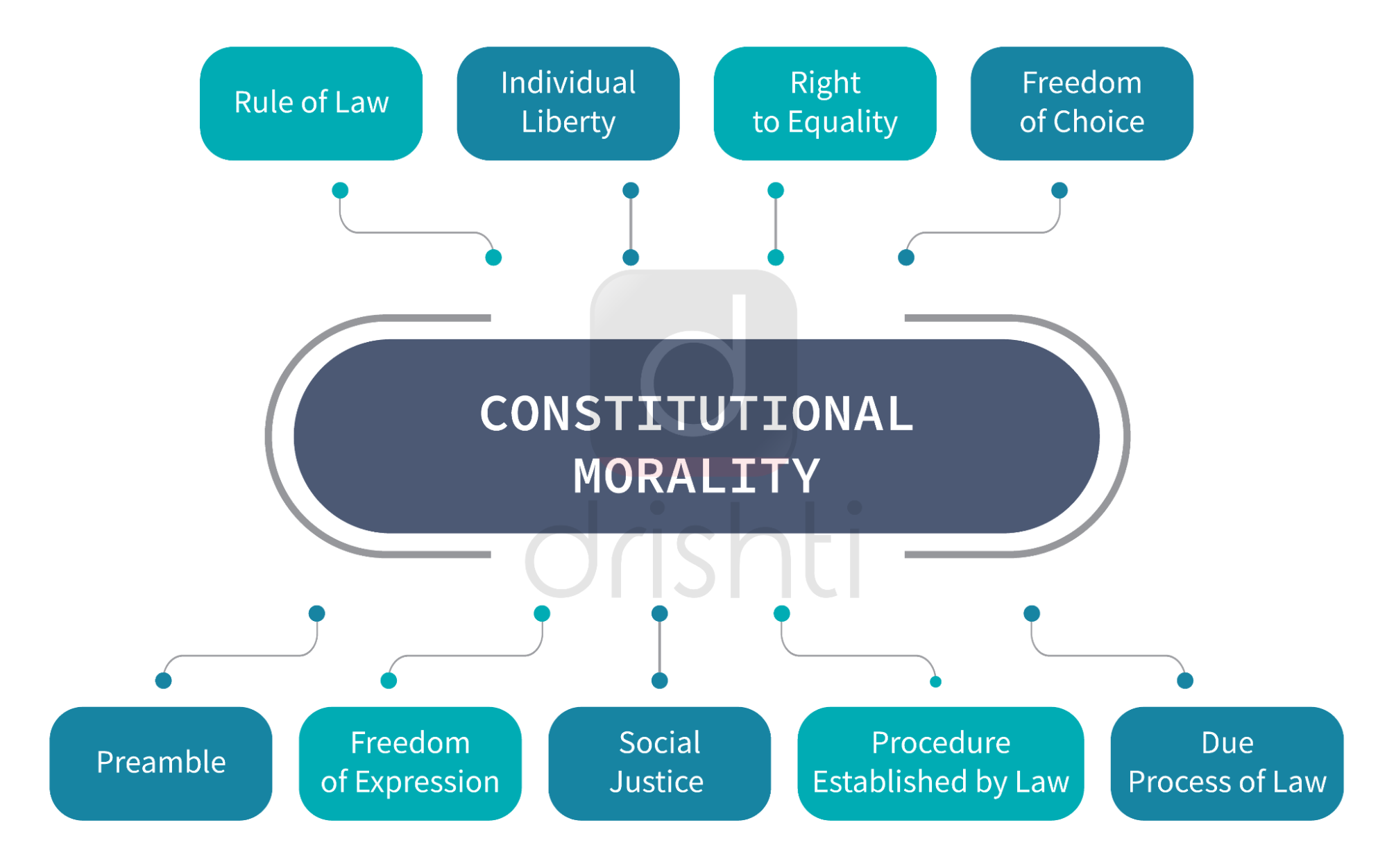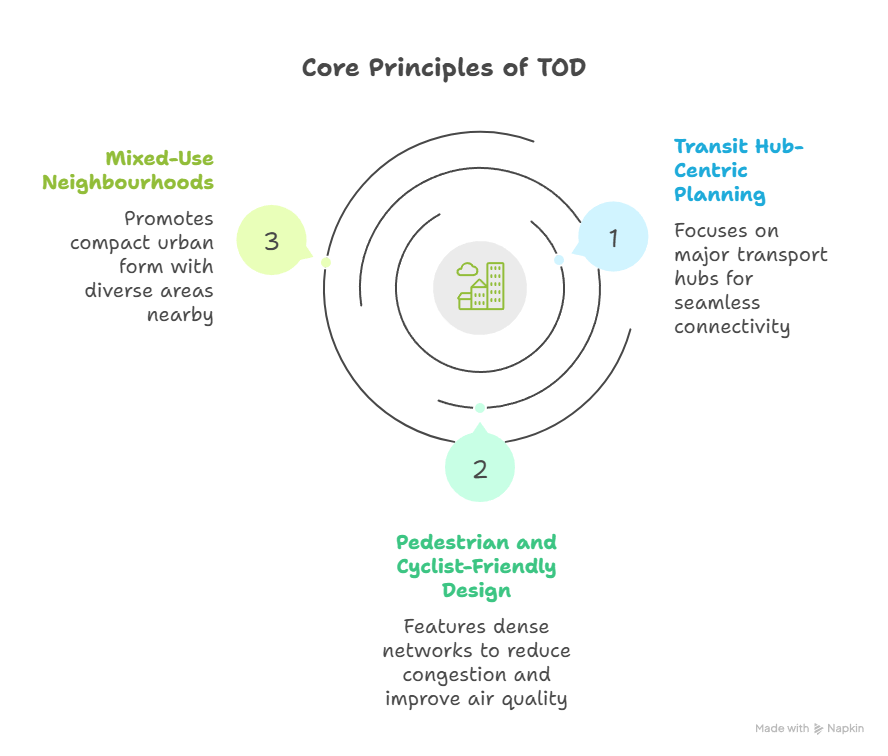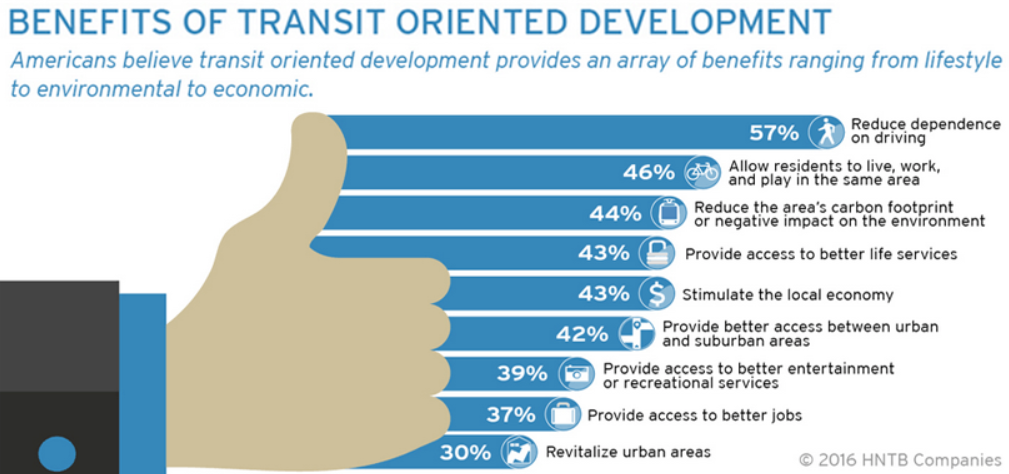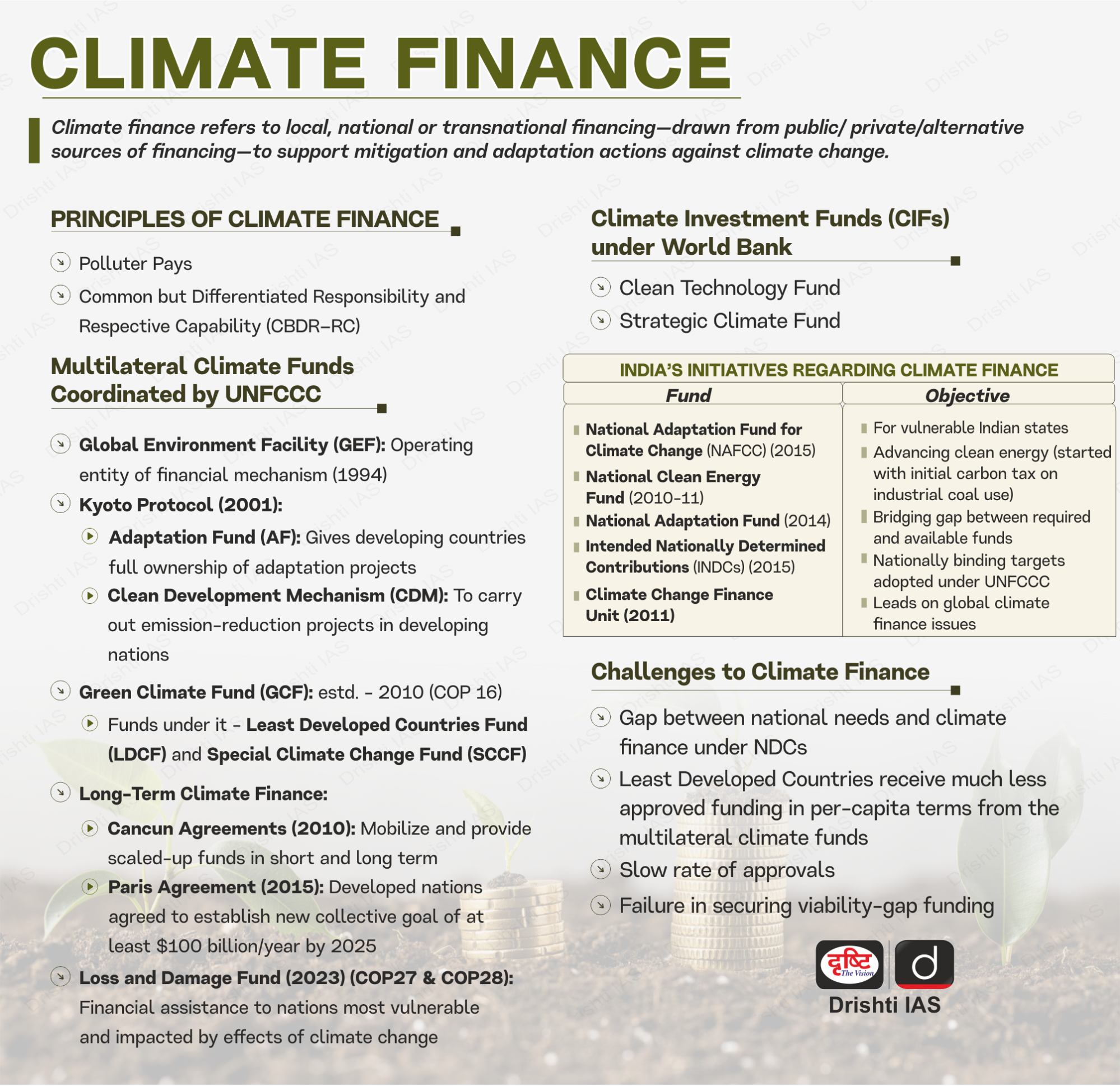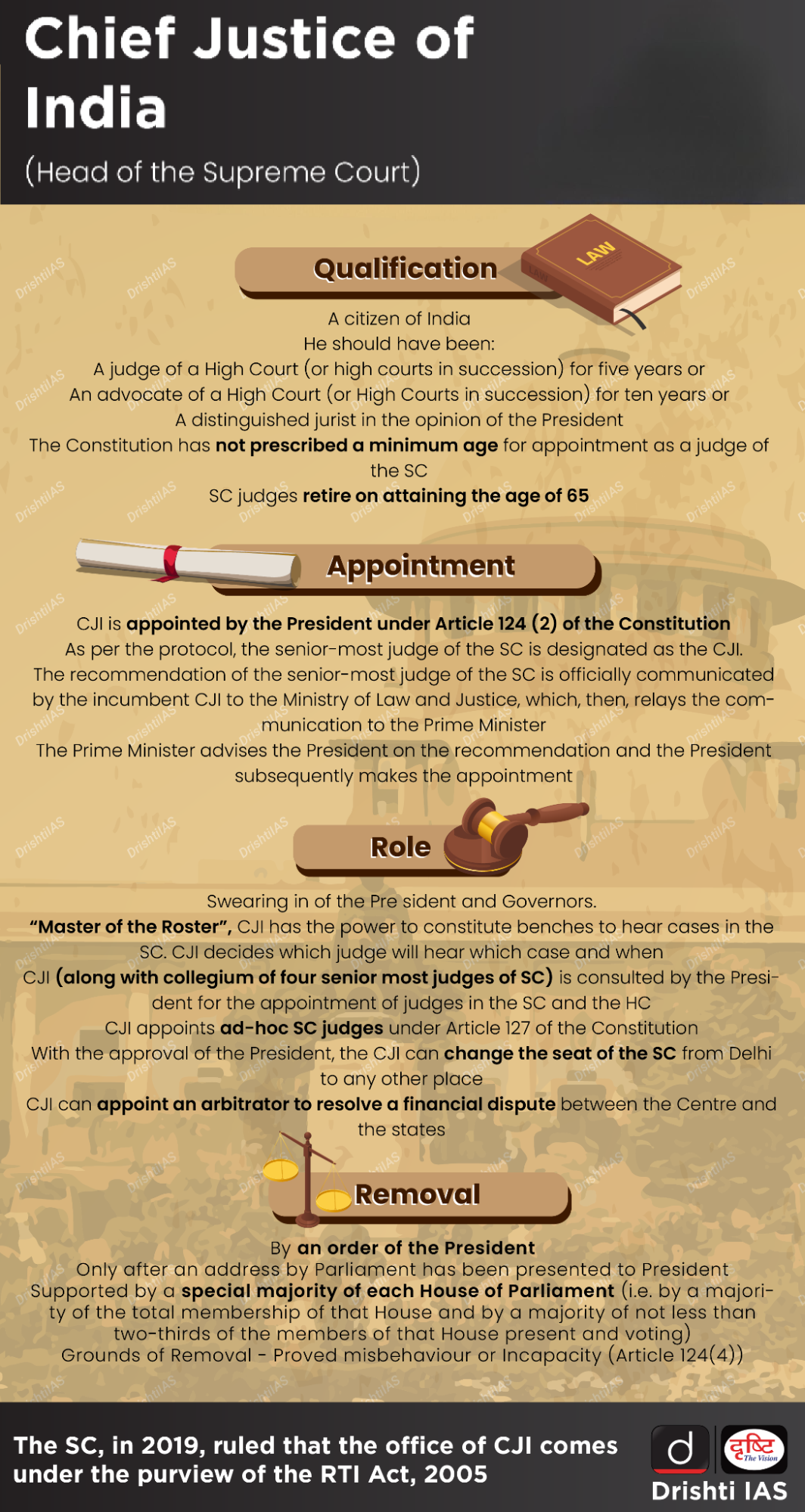Indian Polity
Constitutional Morality in India
For Prelims: Constitutional morality, Pillars of Constitutional Morality, Conditional Morality and Indian Constitution, Directive Principles of State Policy, Fundamental Rights,
For Mains: Challenges to Constitutional Morality in India, Judicial Pronouncements Related to Constitutional Morality in India.
Why in the News?
Constitutional morality in India has gained renewed attention amid ongoing debates on institutional independence, rule of law, and ethical governance, highlighting its critical role in shaping democratic conduct and upholding constitutional values.
What is Constitutional Morality?
- About: It is defined as a “paramount reverence for the forms of the Constitution” that ensures obedience to lawful authority while allowing freedom of expression and dissent.
- It refers to the adherence to the Constitution not just in letter, but in spirit.
- The idea of constitutional morality was introduced by the British historian George Grote as a balance between freedom and restraint, where citizens uphold constitutional authority while retaining the right to openly critique those in power.
- Dr. Ambedkar’s Thought on Constitutional Morality: Dr. B.R. Ambedkar invoked Grote’s idea to stress the importance of cultivating a deep respect for constitutional processes. Ambedkar observed that “constitutional morality is not a natural sentiment-it has to be cultivated”.
- Pillars of Constitutional Morality:
- Constitutional Values & Rights: Upholding justice, liberty, equality, fraternity, secularism, and protection of fundamental rights.
- Rule of Law & Accountability: Ensuring all, including those in power, are bound by law through checks, balances, and democratic participation.
- Ethical & Transparent Governance: Promoting integrity, responsibility, and transparency in public affairs.
How has the Judiciary Applied Constitutional Morality to Advance Social Reform in India?
- Protection of Privacy and Human Dignity: In Justice K.S. Puttaswamy (Retd.) v. Union of India (2017), the SC recognised the right to privacy as a fundamental right, holding that dignity, autonomy, and liberty are essential components of constitutional morality.
- Preservation of Constitutional Values: In Kesavananda Bharati v. State of Kerala (1973), the Court established the Basic Structure Doctrine, ensuring that parliament cannot alter the essential democratic and secular features of the Constitution.
- LGBTQ+ Rights: In Naz Foundation v. NCT of Delhi (2009) and later reaffirmed in Navtej Singh Johar v. Union of India (2018), the SC held that constitutional morality must prevail over societal prejudice and decriminalised consensual same-sex relations.
- Gender Equality and Religious Reform:In Indian Young Lawyers Association v. State of Kerala (Sabarimala, 2018), the SC struck down the ban on entry of women into the Sabarimala Temple, holding that gender equality and liberty outweigh discriminatory religious customs.
- Gender Equality and Marital Reform: In Joseph Shine v. Union of India (2018), the Court decriminalised adultery by striking down Section 497 of the IPC, reaffirming gender equality and recognising women’s autonomy within marriage.
What are the Challenges to Constitutional Morality in India?
- Political Interference: The increasing political influence over constitutional and statutory bodies has raised concerns, as seen in recent developments like the judiciary ruling on the Governor's role in withholding assent to state bills, highlighting tensions between institutional autonomy and political intervention.
- Judicial Activism vs. Restraint: While cases like Vishaka v. State of Rajasthan (1997) show how judicial activism can advance rights, excessive judicial overreach risks upsetting the separation of powers.
- Weak Enforcement: Delays in implementing key rulings such as the Vineet Narain (1998) judgment on institutional accountability and poor awareness of rights erode the force of constitutional morality.
- Societal Resistance: Deep-rooted caste hierarchies, gender discrimination, and religious orthodoxy- seen in issues like temple entry or inter-caste marriages-continue to obstruct equality and fraternity envisioned by the Constitution.
How can Public Institutions Uphold Constitutional Morality?
- Strengthening Institutions: Bodies responsible for governance, investigation, and oversight(Election Commission, CBI, and NIA) must operate autonomously and without political interference to uphold constitutional values and public trust.
- Enhancing Access to Justice: Simplifying legal procedures, reducing judicial backlog, and improving legal aid can ensure equality before the law.
- Encouraging Ethical Leadership: Public officials must demonstrate integrity, accountability, and adherence to constitutional principles.
- Promoting Civic Education: Educating citizens, especially youth, about constitutional rights and responsibilities can cultivate constitutional culture.
Conclusion
Dr. B.R. Ambedkar’s warning that “constitutional morality is not a natural sentiment-it has to be cultivated” remains deeply relevant today. For India’s democracy to flourish, both citizens and leaders must internalise the spirit of the Constitution. When constitutional morality guides governance and public life, the Constitution ceases to be a mere legal document-it becomes a living charter of justice, liberty, equality, and fraternity for all Indians.
|
Drishti Mains Question Q. Discuss the significance of Constitutional Morality in strengthening democratic governance and ensuring the ethical functioning of constitutional institutions in India |
Frequently Asked Questions
Q.Who introduced the concept of Constitutional Morality?
Historian George Grote introduced the term in History of Greece (1846); Dr. B.R. Ambedkar later adapted it for India’s constitutional framework.
Q.What does Constitutional Morality mean in India?
It refers to adherence to the constitutional values of justice, liberty, equality, and fraternity by citizens and public officials alike.
Q.How is Constitutional Morality different from societal morality?
While societal morality changes with time, constitutional morality upholds enduring principles like equality, liberty, and human dignity, even against popular opinion.
Q.Which Supreme Court judgments highlighted Constitutional Morality?
Key cases include Kesavananda Bharati (1973), Naz Foundation (2009), Sabarimala (2018), and Navtej Singh Johar (2018) reaffirming equality and constitutional values
UPSC Civil Services Examination Previous Year’s Questions (PYQs)
Mains:
Q: What is meant by the term ‘constitutional morality’? How does one uphold constitutional morality? (2019)
Q. “Constitutional morality is the fulcrum which acts as an essential check upon the high functionaries and citizens alike…”
Q. In view of the above observation of the Supreme Court, explain the concept of constitutional morality and its application to ensure balance between judicial independence and judicial accountability in India. (2025)
Indian Economy
Transit-Oriented Development for Urban Sustainability
For Prelims: National Transit-Oriented Development Policy (2017), Urban Infrastructure Development Fund (UIDF), Multi-Modal Transport Hub (MMTH), Economically Weaker Sections (EWS), GIS Mapping.
For Mains: Transit-Oriented Development: Features, Significance, Challenges, and Way Forward for Sustainable Urban Development.
Why in News?
The 48-storey 'Towering Heights' in East Delhi is India’s first transit-oriented development (TOD) project, marking a shift from car-centric planning to integrated, sustainable urban living.
What is Transit Oriented Urban Development?
- About: TOD is an urban planning strategy that promotes high-density, mixed-use development around public transport hubs such as metro or railway stations.
- It aims to make public transport the focal point of city development, contrasting with car-centric urban sprawl.
- Core Principles of TOD:
- Objective: Reduce dependence on personal vehicles.
- Shorten travel distances and time.
- Lower pollution levels and commuting costs.
- Encourage walkable, pedestrian-friendly neighbourhoods.
- 3V Framework by World Bank for TOD:
- Node Value: It refers to a station’s importance within the public transit network, determined by passenger traffic, intermodal connections, and its central position in the network.
- Place Value: It reflects the quality and appeal of the station area, based on land use diversity, access to services, nearby amenities, walkability, and urban block size.
- Market Potential Value: It indicates the market potential of station areas, assessed by job density, transit accessibility, housing density, development land, zoning scope, and market activity.
Why is Transit-Oriented Development (TOD) Significant for Urban Development?
- Combating Traffic Congestion and Pollution: Road-centric planning causes traffic jams, fuel waste, and pollution, harming public health. TOD creates walkable, transit-linked neighborhoods, cutting commutes, reducing car use, and improving air quality.
- Managing Urban Sprawl: Urban sprawl causes inefficient land use and high infrastructure costs. TOD encourages vertical, compact growth around transit stations (500–800 m radius), preserving open spaces and optimizing urban land use.
- Financial Viability of Public Transport: Metro system is capital-intensive, but TOD ensures high ridership through dense development near stations. It also enables Value Capture Financing, using rising land values to fund construction and maintenance.
- Reducing Carbon Footprint: TOD cuts car use, commute times, and carbon emissions while boosting productivity. In Stockholm, transit-based growth raised economic value by 41% and cut emissions by 35% (1993–2010).
- Boosting Economic Competitiveness: TOD promotes higher densities and job clustering, enhancing city competitiveness—doubling job density can raise economic productivity by 5–10%.
What are the Concerns Associated with Transit-Oriented Development Projects in India?
- High Initial Costs: TOD demands high upfront investment for land acquisition and mixed-use development, often exceeding public funding. It can also raise property prices, causing displacement and undermining inclusive growth.
- Design Challenges: TOD can fail without last-mile connectivity, such as safe walkways, cycling lanes, and feeder buses. Car-centric planning and infrastructure pressure on water, sewage, and public amenities further hinder its success.
- Fragmented Institutional Framework: Overlapping roles of urban local bodies, metro corporations, and state governments, along with the lack of a unified transport authority, lead to coordination gaps and planning delays.
- Higher Population Density: Weak regulations can cause uneven development, overburdening high-density areas while leaving others underdeveloped and poorly connected.
- Limitations in Indian Context: In island cities like Hong Kong and Singapore, TOD maximizes land use efficiency and reduces urban sprawl, but may be less suited to cities like New Delhi or Bengaluru.
National Transit Oriented Development (TOD) Policy, 2017
- About: The Ministry of Housing and Urban Affairs (MoHUA) launched the National Transit-Oriented Development Policy (2017) to guide states and cities in adopting TOD-based urban growth.
- Vision:
- Promotes public transport and green mobility, reducing pollution and congestion.
- Encourages compact, walkable, and affordable neighbourhoods with dense infrastructure.
- Shifts focus from private vehicles to public transport-oriented development.
- Integrates inclusive and affordable housing for all income groups.
- Enhances recreation, safety, and environmental sustainability through eco-friendly travel options.
- Initiatives Taken for TOD Development in india:
What Steps are Needed to Implement TOD for Sustainable Urban Development?
- Policy and Regulatory Reforms: Integrate TOD into city plans, zoning laws, and regulations, with uniform norms for land use, density norms, and parking. Make TOD implementation mandatory for all new metro and mass transit corridors.
- Institutional Coordination: Set up a Unified Metropolitan Transport Authority (UMTA) in major cities to coordinate transport, housing, and urban planning, with formal protocols for inter-agency coordination and synchronized execution.
- Financing and Incentives: Adopt Value Capture Financing (VCF) tools like land value tax, development charges, or extra Floor area ratio (FAR) to fund TOD projects.
- Provide developer incentives and promote PPP models for infrastructure and mixed-use development.
- Inclusive and People-Centric Design: Reserve Economically Weaker Sections (EWS) and Low-Income Groups (LIG) housing in TOD zones for social inclusivity and offer rental or hostel accommodations near transit hubs for workers and students.
- Data-Driven Planning and Monitoring: Use GIS mapping and data analytics to plan TOD zones and set performance metrics (e.g., reduced travel, higher ridership, walkability, social mix) for regular monitoring.
Conclusion
Transit-Oriented Development is a crucial paradigm shift for sustainable urban India, combating sprawl, congestion, and pollution. While the National TOD Policy 2017 provides a roadmap, its success hinges on overcoming financial, institutional, and inclusivity challenges through integrated governance, innovative financing, and people-centric design to build truly livable cities.
|
Drishti Mains Question: Q. Transit-Oriented Development (TOD) is often hailed as a solution to India's urban woes. Critically examine its potential in ensuring sustainable and inclusive urban growth |
Frequently Asked Questions (FAQs)
What is Transit-Oriented Development (TOD)?
TOD is a planning approach that promotes high-density, mixed-use development within walking distance (typically 500–800 m) of public transit stations to reduce car dependence and increase transit ridership.
What are the three core principles of TOD?
The three core principles are: Transit Hub-Centric Planning, Pedestrian and Cyclist-Friendly Design, and the creation of Dense Mixed-Use Neighbourhoods.
What is the objective of the National Transit-Oriented Development Policy (2017)?
Its vision is to transform urban development by shifting from private vehicle dependence to public transport-oriented development, creating walkable communities and reducing pollution and congestion.
UPSC Civil Services Examination, Previous Year Questions (PYQs)
Mains
Q. How is efficient and affordable urban mass transport key to the rapid economic development in India? (2019)
Q. With a brief background of quality of urban life in India, introduce the objectives and strategy of the ‘Smart City Programme.” (2016)


Facts for UPSC Mains
Rashtriya Ekta Diwas 2025: Sardar Patel @150 - A Legacy of Unity
Why in News?
Rashtriya Ekta Diwas 2025 (National Unity Day) marks the 150th birth anniversary of Sardar Vallabhbhai Patel, the architect of India’s political integration. Observed every year on 31st October, the day celebrates his legacy through events like the Run for Unity and Unity March, reaffirming the spirit of national cohesion.
What is Rashtriya Ekta Diwas (National Unity Day)?
- About: Rashtriya Ekta Diwas instituted in 2014 by the Government of India to recognise Sardar Patel’s role in unifying India.
- It symbolises the ideals of national integration, peace, and unity in diversity.
- It encourages citizens to reaffirm their commitment to national integrity and collective strength.
- The day also serves as a platform to promote the ‘Ek Bharat Shreshtha Bharat (EBSB)’ initiative, announced by PM Modi in 2015.
- Statue of Unity: Inaugurated on 31st October 2018 at Kevadia, Gujarat, the Statue of Unity is the world’s tallest statue at 182 metres, dedicated to Sardar Vallabhbhai Patel.
- It is located on Sadhu Bet hillock overlooking the Narmada River and the Sardar Sarovar Dam, it symbolises national unity and pride.
- In 2020, it was recognised among the “Eight Wonders of the Shanghai Cooperation Organisation (SCO).”
What was Sardar Vallabhbhai Patel’s Contribution to National Integration?
- Post-independence Consolidation of India: At Independence, 17 British provinces were directly ruled by the British, while 40% of territory was under princely states.
- The Indian Independence Act, 1947 ended British paramountcy, allowing princely states to join India, Pakistan, or remain independent, a major challenge to unity.
- Many rulers considered independence or accession to Pakistan, threatening India’s territorial and political integrity.
- Vallabhbhai Patel as India’s first Deputy Prime Minister and Home Minister, led the integration of 560 princely states into a united India after 1947.
- He created a States Department, headed by V. P. Menon, to handle princely state negotiations.
- Patel used persuasion and firmness to integrate princely states. He assured rulers of autonomy and privy purses, stressing unity’s benefits.
- His balanced diplomacy led most to sign the Instrument of Accession, ensuring peaceful integration.
- The Indian Independence Act, 1947 ended British paramountcy, allowing princely states to join India, Pakistan, or remain independent, a major challenge to unity.
- Handling Resistant States: Patel used decisive action where persuasion failed.
- Junagadh: Ordered police action when the Nawab chose to accede to Pakistan, later confirmed accession through a plebiscite.
- Hyderabad: Conducted “Operation Polo” in 1948 to quell the Razakar militia and integrate the state.
- Kashmir: Though not directly handled by Patel, his firm stance and administrative support aided integration after Maharaja Hari Singh’s accession.
- These actions established the precedent of a strong, unified Indian state.
- Institutional Integration: Patel established the All India Services (AIS) under Article 312 to ensure administrative unity and efficiency.
- He called the AIS the “Steel Frame of India”, crucial for maintaining national integrity in a federal setup.
- His address to the first batch of IAS officers in 1947 remains foundational to the ethos of public service.
- Legacy and Long-term Impact: His leadership during the turbulent post-Partition years earned him the title “Iron Man of India.”
- His model of cooperative federalism with strong national unity continues to guide India’s governance.
- The integration of Pondicherry (1954) and Goa, Daman, and Diu (1961) followed the foundation laid by Patel.
- Comparative Perspective: Often compared to Otto von Bismarck of Germany, but Patel’s methods were democratic and persuasive, not militaristic.
- Patel emphasised consensus-building, respect for diversity, and rule of law, aligning with India’s democratic values.
What is Ek Bharat Shreshtha Bharat (EBSB) Initiative?
- About: Launched on 31st October 2015, the EBSB initiative seeks to carry forward Patel’s vision of national unity and integration through cultural, linguistic, and social exchange among States and Union Territories.
- Key Objectives: Strengthen emotional bonds among citizens across regions.
- Promote cultural exchange and linguistic appreciation between states.
- Foster national integration through structured inter-state partnerships.
- Highlight India’s diverse art, heritage, and traditions.
- Encourage mutual learning and sharing of best practices.
- EBSB Events and Initiatives Promoting Unity:
- State and UT Pairing: EBSB promotes the idea of “unity in diversity” by pairing different States and Union Territories to strengthen emotional bonds through linguistic, cultural, and educational exchanges.
- Bhasha Sangam App: It is an initiative of the Ministry of Education under EBSB, to teach basic sentences of everyday usage in 22 Indian languages, encouraging linguistic inclusion.
- Yuva Sangam & EBSB Clubs: Promote student exchanges and inter-state youth engagement to build understanding.
- Kashi Tamil Sangamam: Celebrates the cultural and spiritual bond between Kashi and Tamil Nadu, promoting unity through art, language, and tradition exchange.
- Cultural & Food Festivals: Enhance inter-regional appreciation and tourism.
- Digital Outreach: Platforms like My Bharat Portal and EBSB Quiz encourage civic participation and cultural awareness online.
- Impact: It extends the spirit of Rashtriya Ekta Diwas beyond a single day, transforming it into a continuous movement for national unity.
- With millions of participants, it supports initiatives like Dekho Apna Desh (Tourism) and indigenous sports promotion, reinforcing India’s collective identity.
Conclusion
Rashtriya Ekta Diwas 2025 is not just a tribute to the “Iron Man of India” but a renewed call to strengthen unity in diversity. The observance, combined with the EBSB initiative, continues to transform Patel’s ideals into a living national ethos, promoting unity, diversity, and collective responsibility in a rapidly changing world.
|
Drishti Mains Question: Q. Critically examine Sardar Vallabhbhai Patel’s strategy of “persuasion with firmness” in integrating the princely states. |
Frequently Asked Questions (FAQs)
1. What is Rashtriya Ekta Diwas?
Rashtriya Ekta Diwas (National Unity Day) is observed on 31st October to commemorate Sardar Vallabhbhai Patel’s birth anniversary and his role in integrating princely states into the Indian Union.
2. What was the Instrument of Accession?
The Instrument of Accession was a legal document by which princely states ceded specified subjects (defence, foreign affairs, communications) to the Indian Union.
3. Why were All India Services created and under which constitutional provision?
All India Services were created to ensure a unified, merit-based civil administration across Centre and States, preserving administrative cohesion; their creation is authorised under Article 312 of the Constitution.
4. What is Ek Bharat Shreshtha Bharat (EBSB)?
Launched in 2015, EBSB pairs States/UTs for cultural and educational exchange (Bhasha Sangam, Yuva Sangam, festivals), strengthening emotional bonds and sustaining “unity in diversity”.
UPSC Civil Services Examination, Previous Year Questions (PYQs)
Prelims
Q. For the Karachi Session of Indian National Congress in 1931 presided over by Sardar Patel, who drafted the Resolution on Fundamental Rights and Economic Programme? (2010)
(a) Mahatma Gandhi
(b) Pandit Jawaharlal Nehru
(c) Dr. Rajendra Prasad
(d) Dr. B. R. Ambedkar
Ans: (b)
Facts for UPSC Mains
Adaptation Gap Report 2025
Why in News?
The United Nations Environment Programme (UNEP) Adaptation Gap Report (AGR) 2025 notes that climate adaptation efforts remain severely underfunded even as climate impacts intensify, highlighting the need for urgent global cooperation to achieve resilience and sustainable development goals.
What are the Key Highlights of the Adaptation Gap Report (AGR) 2025?
- Rising Adaptation Finance Needs: Developing countries will require USD 310–365 billion annually by 2035 for climate adaptation. Adjusted for inflation to 2035, needs could reach USD 440–520 billion annually.
- This estimate reflects rising rapid-onset and slow-onset climate impacts risks and escalating costs of implementing adaptation measures.
- Widening Adaptation Finance Gap: Current international public adaptation finance stands at only USD26 billion (2023). The resulting finance gap is USD 284–339 billion per year, making current funding highly inadequate.
- Missed Global Targets: The Glasgow Climate Pact goal of doubling 2019 adaptation finance to USD40 billion by 2025 will likely be missed.
- The New Collective Quantified Goal (NCQG) of USD 300 billion by 2035 is insufficient and not inflation-adjusted.
- Funding through Climate Mechanisms: Support via the Adaptation Fund, Global Environment Facility, and Green Climate Fund rose to USD 920 million in 2024, an 86% increase over the 2019–23 average.
- UNEP notes that this may be a temporary spike amid growing fiscal constraints.
- Unequal Burden and Slow Progress in Adaptation: Developing nations face an unequal burden of adaptation finance, with about 58% of funds coming as debt instruments, mostly non-concessional loans, deepening long-term debt and climate injustice.
- At the same time, while 172 of 197 countries have national adaptation plans, 36 of them are outdated, weakening their ability to respond to evolving climate risks.
- Small Island Developing States (SIDS) show the strongest integration of adaptation into national policies.
Recommendations
- Baku to Belém Roadmap: Fast-track Baku to Belém Roadmap adopted at 9th Conference of the Parties (COP 29) to the UN Framework Convention on Climate Change (UNFCCC).
- It calls for scaling up climate finance for developing nations to USD 1.3 trillion annually by 2035.
- Enhance Private Sector Participation: Current private adaptation finance is around USD 5 billion annually. With supportive policy and blended finance, it could rise to USD 50 billion per year, still only a fraction of total needs.
- Encourage blended finance and public-private partnerships to de-risk investments.
- Prioritise Grants and Concessional Finance: Avoid new debt traps by focusing on non-debt-creating instruments. Emphasize grants, concessional support, and the phase-out of fossil fuel subsidies to redirect resources toward adaptation.
- Integrate resilience into finance systems by encouraging banks, investors, and insurers to embed climate-risk assessment in decision-making.
- Strengthen Mitigation: The report notes that reducing emissions can contain adaptation costs by limiting the intensity of future impacts.
Key Terms Related to Adaptation
- Adaptation: It means adjusting to current or expected changes in the climate and their effects. For people and communities, it involves reducing damage or making use of new opportunities that arise.
- In natural systems, it can include human actions that help ecosystems cope with changing climate conditions (building resilience).
- Adaptation Costs: The expenses involved in planning, preparing, facilitating, and implementing adaptation measures, including transaction costs.
- Adaptation Gap: The difference between the adaptation actions actually implemented and the desired societal goals, shaped by available resources, priorities, and tolerance for climate impacts.
How is India Balancing Climate Commitments with Development Needs?
- Adaptation-Centric Focus: India’s climate strategy is shifting from mitigation-focused to adaptation-driven action by prioritising climate resilience (strengthening agriculture, water systems, and disaster preparedness) over emission cuts.
- This shift stems from concerns over global inequity in climate finance and the understanding that adaptation provides immediate, local benefits, unlike mitigation, which relies on global cooperation.
- Adaptation aligns with India’s National Adaptation Fund for Climate Change (NAFCC).
- Development Before Decarbonisation: As per the Economic Survey 2024–25, achieving “developed nation” status by 2047 is seen as essential before aggressive deep decarbonisation efforts.
- It echoes the principle of “Common But Differentiated Responsibilities and Respective Capabilities (CBDR-RC)” under the UNFCCC.
- Pragmatic Global Posture: India’s likely delay in submitting its 2035 Nationally Determined Contributions (NDCs) underscores discontent with weak global progress.
- The withdrawal of the US from the Paris Agreement (2025) and Loss and Damage Fund further eroded trust in multilateral climate commitments.
- India continues to advocate climate justice, pushing for a balance between growth, equity, and responsibility.
- Long-Term Vision: India views adaptation is seen as the immediate priority, but mitigation remains the long-term goal.
- India remains committed to achieving Net Zero by 2070, aligning with its NDCs and Long-Term Low Emissions Development Strategy (LT-LEDS).
Conclusion
The UNEP Adaptation Gap Report 2025 warns that adaptation finance is far below global needs. Without urgent concessional funding, stronger mitigation, and reformed climate finance, developing nations risk severe climate impacts. Investing in adaptation now is vital for future survival.
|
Drishti Mains Question: Q. Critically examine the scale and causes of the global adaptation finance gap. What institutional and policy reforms are needed to bridge it? |
Frequently Asked Questions (FAQs)
1. What is the estimated annual adaptation finance needed for developing countries by 2035?
United Nations Environment Programme (UNEP) Adaptation Gap Report (AGR) 2025 estimates USD310–365 billion per year (2023 prices).
2. What is the Baku to Belém Roadmap?
Adopted at COP29, the Baku to Belém Roadmap seeks to scale up climate finance for developing nations to USD 1.3 trillion annually by 2035.
3. What is India’s current climate posture in response to global finance shortfalls?
India is prioritising adaptation and resilience, seeking development-led low-carbon growth and strategic autonomy, while keeping mitigation (Net Zero by 2070) as a long-term goal.
UPSC Civil Services Examination, Previous Year Question (PYQ)
Prelims
Q. With reference to ‘Global Climate Change Alliance’, which of the following statements is/are correct? (2017)
- It is an initiative of the European Union.
- It provides technical and financial support to targeted developing countries to integrate climate change into their development policies and budgets.
- It is coordinated by World Resources Institute (WRI) and World Business Council for Sustainable Development (WBCSD).
Select the correct answer using the code given below:
(a) 1 and 2 only
(b) 3 only
(c) 2 and 3 only
(d) 1, 2 and 3
Ans: (a)
Mains
Q.1 Describe the major outcomes of the 26th session of the Conference of the Parties (COP) to the United Nations Framework Convention on Climate Change (UNFCCC). What are the commitments made by India in this conference? (2021)
Q.2 ‘Climate Change’ is a global problem. How will India be affected by climate change? How Himalayan and coastal states of India will be affected by climate change? (2017)


Important Facts For Prelims
Small Finance Banks (SFBs)
Why in News?
The Reserve Bank of India (RBI) has returned Jana Small Finance Bank’s (SFB) application for transition into a universal bank, citing non-fulfilment of eligibility criteria outlined under its 2024 guidelines for SFBs.
What is a Small Finance Bank?
- About: SFBs are private institutions created to enhance financial inclusion in India. They offer basic banking facilities, including deposits and credit, to unserved and underserved groups like small farmers, micro industries, and informal sector enterprises.
- Origin: Announced in Union Budget 2014–15 to boost financial inclusion, the idea stems from the 2009 Raghuram Rajan Committee’s A Hundred Small Steps report.
- Eligibility Criteria: Resident individuals/professionals with 10 years of experience in banking and finance.
- NBFCs, Micro Finance Institutions (MFIs), and Local Area Banks (LABs) owned and controlled by residents can convert into SFBs.
- Only resident-controlled entities can promote SFBs.
- Capital Requirements: For Primary (Urban) Co-operative Banks transiting into SFBs, initial requirement of net worth shall be ₹100 crore, which will have to be increased to ₹200 crore.
- Minimum paid-up voting equity capital / net worth requirement shall be ₹200 crore.
- Promoter’s initial contribution: 40%, to be reduced to 26% within 12 years.
- Foreign investment permitted as in other private sector banks.
- Regulatory and Prudential Norms: SFBs are full-fledged banks, unlike Payments Banks, and follow RBI’s prudential norms such as CRR and SLR maintenance.
- Regulated under the Banking Regulation Act, 1949 and supervised by the RBI.
- Operational Mandates: Must allocate 75% of Adjusted Net Bank Credit (ANBC) to Priority Sector Lending (PSL).
- At least 50% of loans should be of value up to Rs 25 lakh.
- No geographical restrictions, but 25% of branches must be in unbanked rural centres.
- Preference to banks setting up in under-banked states/districts.
- Permissible Activities: It can distribute mutual fund units, insurance, and pension products with RBI and sectoral regulator approval.
- May become a Category II Authorised Dealer in foreign exchange.
- Cannot establish subsidiaries for non-banking financial activities.
RBI's 2024 Guidelines for Converting SFBs into Universal Banks
- Eligible Applicants: Only listed Small Finance Banks (SFBs) are eligible to apply for conversion into a Universal Bank.
- Financial Requirements: Must have a minimum net worth of Rs 1,000 crore, scheduled bank status, and a profitable operational record for at least five years.
- Asset Quality Criteria: Must maintain gross NPAs below 3% and net NPAs below 1% consistently for the previous two years.
Frequently Asked Questions (FAQs)
1. What is a Small Finance Bank?
SFBs are private institutions created to enhance financial inclusion in India. They offer basic banking facilities, including deposits and credit, to unserved and underserved groups like small farmers, micro industries, and informal sector enterprises.
2. When were SFBs introduced and under whose recommendation?
Introduced in Union Budget 2014–15, based on the 2009 Raghuram Rajan Committee Report – “A Hundred Small Steps.”
3. What are the key eligibility criteria for an SFB to convert into a universal bank as per RBI's 2024 guidelines?
The SFB must be listed, have a minimum net worth of ₹1,000 crore, a profitable track record of 5 years, and maintain gross NPAs <3% and net NPAs <1% for two consecutive years.
UPSC Civil Services Examination, Previous Year Questions (PYQs)
Q. What is the purpose of setting up of Small Finance Banks (SFBs) in India? (2017)
- To supply credit to small business units
- To supply credit to small and marginal farmers
- To encourage young entrepreneurs to set up business particularly in rural areas.
Select the correct answer using the code given below:
(a) 1 and 2 only
(b) 2 and 3 only
(c) 1 and 3 only
(d) 1, 2 and 3
Ans: (a)


Rapid Fire
Justice Surya Kant: 53rd Chief Justice of India
Justice Surya Kant has been appointed as the 53rd Chief Justice of India (CJI), succeeding Justice Bhushan Ramkrishna(B.R) Gavai.
- Appointment: The notification was issued by the Department of Justice in the Union Law Ministry under Article 124(2) of the Constitution, following the President’s approval.
Chief Justice of India
- Appointment: A Supreme Court judge, including the CJI, is appointed by the President under Article 124 (2).
- The outgoing CJI recommends the senior-most Supreme Court judge based on length of service as the next CJI (a customary practice, not a legal requirement).
- Qualification: To qualify as CJI, one must be a citizen of India, have served as a High Court judge for 5 years or as an advocate for 10 years, or be a distinguished jurist in the President’s opinion.
- Tenure: The CJI holds office until the age of 65 years, with no fixed tenure, as it depends on the judge’s date of appointment and retirement.
- The CJI can only be removed by the President after an address by Parliament, supported by a special majority in both Houses.
| Read more: Collegium System of Judicial Appointments in India |
Rapid Fire
India Gains Access to Chinese Rare Earth Magnets
India’s electric vehicle (EV) and automotive sectors got relief as Indian firms secured the first conditional licences to import rare earth magnets from China after Beijing eased export curbs.
- Export Restriction and Its impact: Earlier in April 2025, China imposed export restrictions on rare earth magnets and related materials, disrupting global automotive supply chains.
- As part of a trade deal between the US and China, Beijing has temporarily paused these controls for one year, enabling selective exports to countries like India.
- The restrictions had threatened supply shortages, production delays, and cost hikes for India’s nascent EV market, which depends heavily on neodymium-iron-boron (NdFeB) magnets.
- Nd-Fe-B magnets are the strongest type of permanent magnets and operate at high temperatures (150–200°C).
- NdFeB magnets are crucial for EV motors, power steering, braking, and wiper systems, making them vital to India’s electric mobility and clean energy transition.
- Indian Companies Licensed: These licences come with strict export control conditions, limiting use to non-defence applications such as vehicle components.
- Policy Implication: China holds a near-monopoly over global rare earth magnet supply, making import diversification a strategic concern for India’s energy security.
- This underscores India’s need to develop domestic rare earth processing and magnet manufacturing capacity under initiatives like Atmanirbhar Bharat.
- India is enabling short-term rare earth imports from nations like Vietnam and Brazil while targeting domestic production within 3–5 years through incentives and partnerships.
| Read more: Rare Earth Magnet |

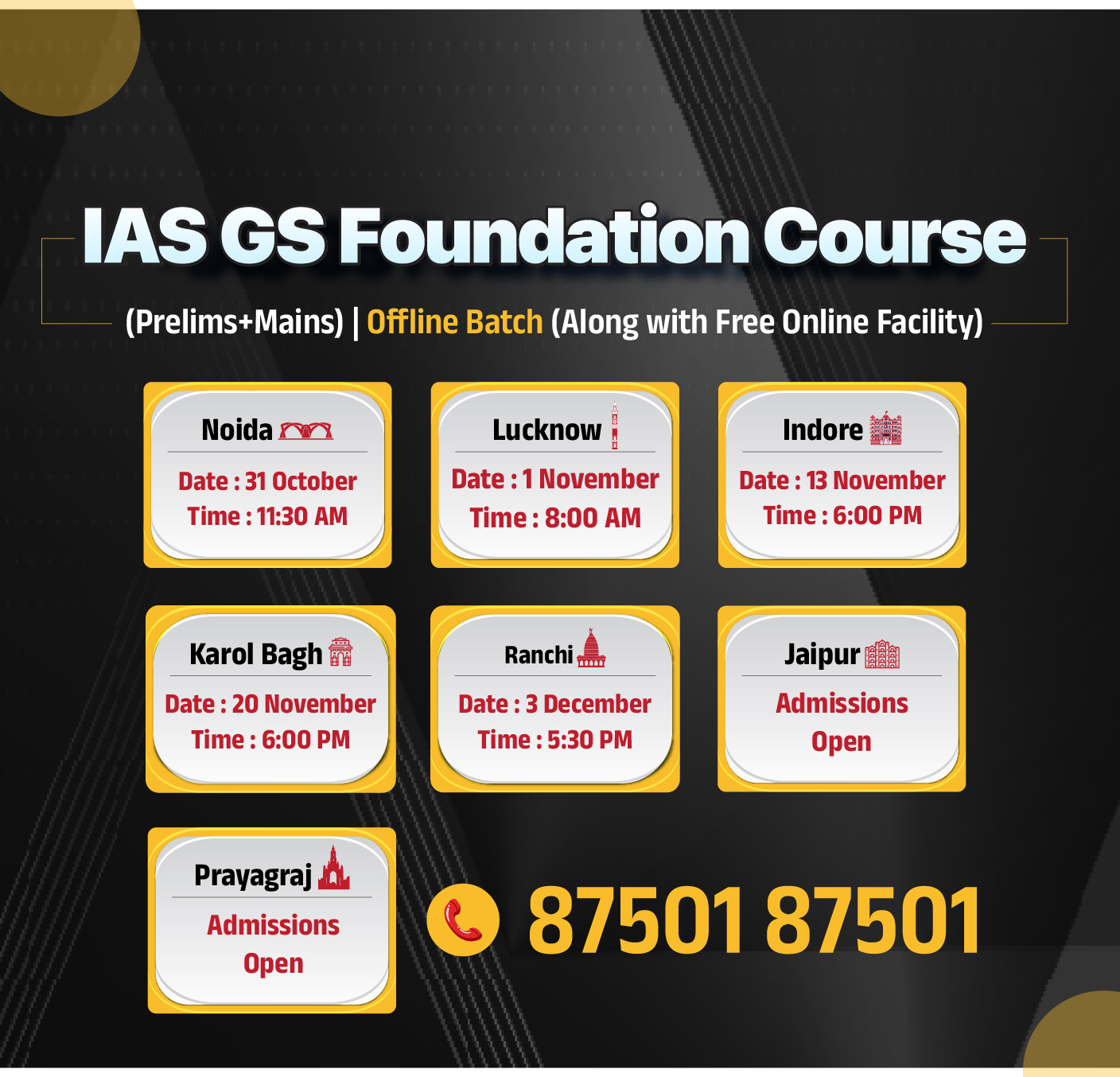
Rapid Fire
Biosimilars
The US Food and Drug Administration (FDA) has released new draft guidelines aimed at reducing the cost and time for biosimilar development. This shift is expected to significantly benefit Indian pharma companies which have invested heavily in biosimilar pipelines.
- This can remove the requirement for comparative efficacy trials, saving USD20–25 million per project, and shorten development timelines from 5–7 years to 3–4 years.
Biosimilar
- About: A biosimilar is a biologic medication that is highly similar to an already approved biologic, known as the reference product.
- A biosimilar is not a generic drug; unlike generics, which are simple chemical copies, biosimilars are complex proteins made from living cells, highly similar but not identical to the original biologic.
- Composition: Both biosimilars and their reference biologics are made from living sources such as cells, tissues, microorganisms (bacteria or yeast), or combinations of natural materials like proteins and sugars.
- Cost Advantage: Biosimilars are typically available at a lower cost than the original biologics, improving patient access to affordable treatments.
- India’s Position: Indian pharma firms hold under 5% of the USD 30 billion global biosimilars market, but are expanding through the National Biopharma Mission and Genome Valley expansion in Telangana.
- Indian biosimilar exports, currently valued at USD 0.8 billion, are projected to grow 5x to USD 4.2 billion by 2030, capturing 4% of the global market, and reach USD 30-35 billion by 2047.
- Application: Biosimilars are safe and effective for treating various chronic diseases, including cancer, diabetes, and autoimmune disorders.
| Read More: Technologies Shaping the Pharma Industry |

